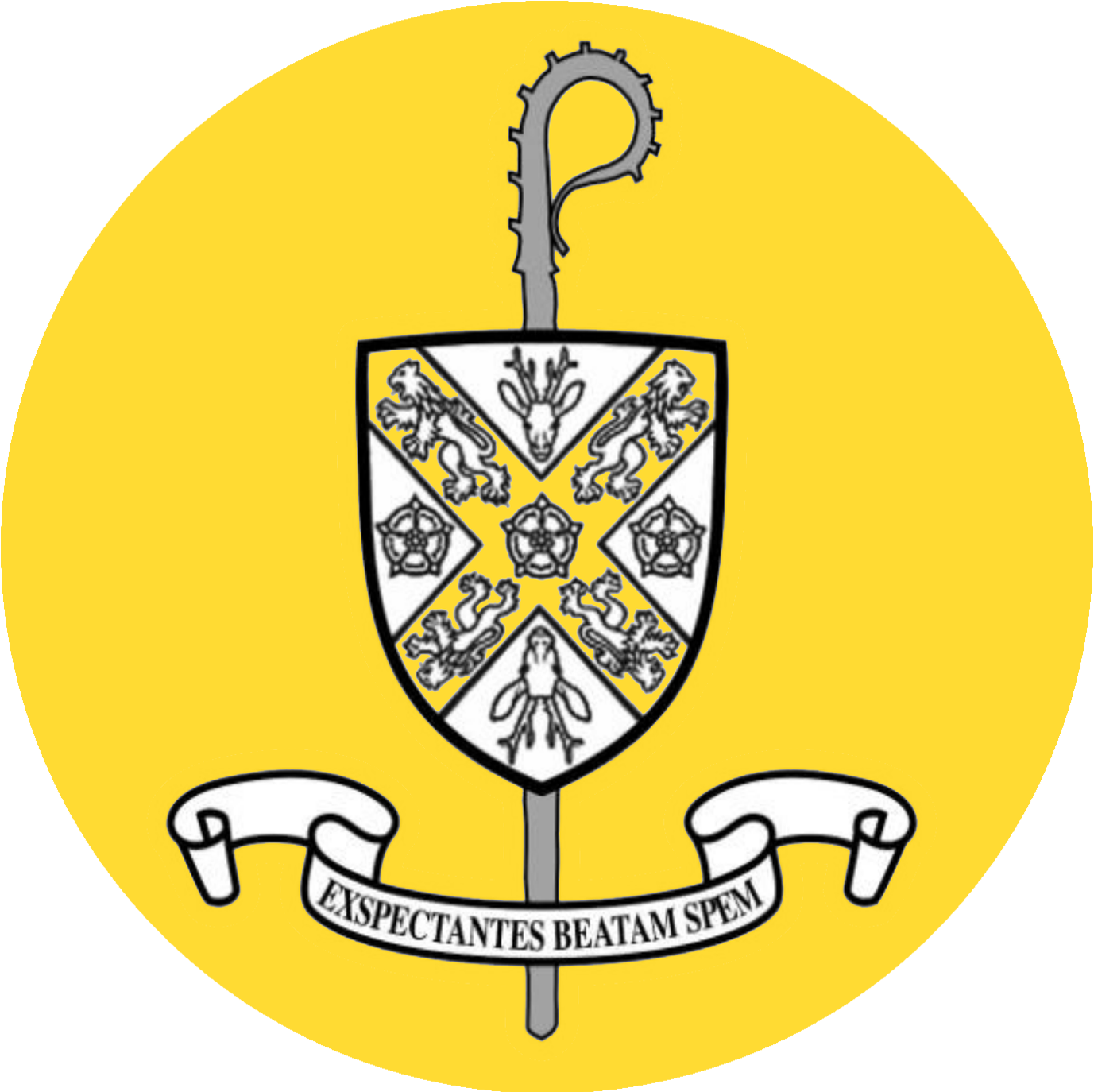On 15th October 2008, the Cleveland Newman Circle welcomed one of their own, Mr Kevin Ryan, who shared with the group something of the life and work of one of the greatest churchmen of the 12th Century.
Aelred was born in 1110 in Hexham, Northumberland, from a line of married priests; his grandfather being Parish Priest at Durham Cathedral. It was at the Abbey School in Durham that Aelred was educated until, at the age of 14, he was selected by King David of Scotland to befriend his son, Prince Henry. His teenage years were, therefore, spent at the Scottish Court where David’s Norman ideas influenced Aelred’s thinking. By his early twenties, he was Steward of King David’s household and in 1134, he was sent on a mission to Archbishop Thurston of York.
Rievaulx had been founded on 5th March 1132 at the instigation of St Bernard who sent 12 Cistercian monks. On completing his business with Archbishop Thurston, Aelred spent a night with Walter Espec at Helmsley Castle, having passed by the monastery’s tiny group of buildings on the River Rye. On staying a second night, he resolved that if he could persuade his friend Waldef, and his party, back from Kirkham Priory then the following day he would enter the monastery at Rievaulx. He spent only four days in the guest house before he was accepted, soon making an impression on the Abbot.
At first, the Community lived in wooden huts beginning a 10 year programme to build a church with stones from a local quarry. In 1139, the Second Lateran Council reasserted the right of religious communities to participate in the election of a new Archbishop of York. However, this was not observed and in 1140, a new Archbishop was re-elected by the Cathedral Chapter. There was quite a dispute lasting some 20 years; an appeal was even sent to the Pope for it was believed that money had changed hands. In March 1142, on route to Rome, Aelred went to see St Bernard in Clairvaulx who was impressed with his learning and intellect. So much so, that he commissioned him to write a book of meditations, which later formed the basis of Aelred’s book The Mirror of Charity. He also gave him a letter of introduction to Pope Innocent III.
On return from Rome, he became Novice Master at Rievaulx but within a year was sent to found the daughter-house at Revesby in Lincolnshire prior to being elected its first Abbot in 1147. This position as Abbot forced him to travel far and wide, as did most Abbots of Cistercian houses. His reputation was so great that he was selected to preach the sermon at the translation of the relics of Edward the Confessor, one of the most beloved saints in all of England. Aelred corresponded with many monarchs of his time, including Henry II of England and Louis VI of France. Over 300 letters of this correspondence are preserved. Once, on being held up for two weeks on The Channel, he wrote a hymn in honour of St Cuthbert.
These frequent travels took their toll on Aelred and Walter Daniel’s Life of Aelred paints a vivid picture of the illness and pain during the last 10 years of Aelred’s life. He had arthritis and a kidney stone for which, at that time, there were no drugs. He was in so much pain that he often could not bear to be touched and would frequently cry out in sheer agony. He lived in a building close to the Infirmary and from there he managed to conduct the business of the monastery; walking, talking, working, praying. Aelred died on 12th January 1167 and he was buried in the chapter house next to the Abbot William. Aelred’s kind and tender nature and his devotion to spiritual friendship encouraged the tremendous growth in vocations during his Abbacy. At the time of his death, there were 140 monks in the monastery and 500 laybrothers; a tremendous achievement.
The writings which he left behind include:
- The Mirror of Charity written in the spring of 1142 at St Bernard’s request and which was used to inspire novices. It certainly answered the criticism that the Cistercians were following the teachings of St Benedict too strictly.
- An exposition of the Gospel Reading of Jesus when 12 years old. This meditation gave a sense of the possibilities of a life of prayer and, in particular, the affective contact of the person of Jesus.
- An account of The Battle of Standard which took place in 1138, north of Northallerton.
- A lament on King David, on his death, which gave a civilised account of his reign in Scotland and outlined his foundation of churches and monasteries.
- A genealogy of Kings which showed how the Saxons and Normans came together in Henry II, who was born of Ethelred and Emma.
- The Life of Edward the Confessor.
- On Spiritual Friendship which is a question and answer dialogue between Aelred and two or three other monks.
- Miracles of Holy Fathers (Hexham Church) for he had learnt about the lives of St Wilfrid and St Cuthbert when attending Hexham Church as a boy.
- A Life of Recluses, which was a letter to his sister written in two parts. One, where he discussed bodily things and two, where he dealt with spiritual matters.
He, thus, remains one of the most loved saints in Cistercian history. One is left to wonder, how he compares with St Thomas Becket.
